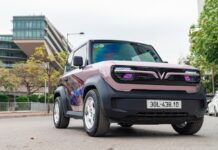In 2023, numerous car manufacturers have submitted patent applications proposing breakthrough ideas to optimize vehicle performance and enhance user experience.
Here are some noteworthy emerging technologies that may be implemented in the near future:
Advanced fuel-efficient combustion technology
Porsche has filed multiple patents last year, introducing innovative methods to enhance combustion efficiency. One of these methods involves the use of forced induction to assist in engine start-up.
Zuffenhausen is currently exploring the application of racing car technology on public roads, employing pneumatic valve systems. This technology enables vehicles to achieve impressive acceleration capabilities in the future.
Ford revolutionizes practical applications in vehicles
In contrast to Porsche, Ford aims to enhance practical applications in pickup trucks, providing users with added conveniences.
In the future, Ford plans to incorporate horizontal sliding rails and a robotic arm into the truck bed, allowing for the attachment of various accessories, including a 3D printer.
Ford also intends to develop an exterior body panel that doubles as a sliding table, a truck bed that functions as a refrigerator, and an improved rear door system, enabling the pickup truck to transform into a six-wheeler.
Moreover, the American automaker is working on creating a mobile movie theater and additional roof-mounted accessories, transforming an ordinary pickup truck into a luxurious one.
Advanced driving technology
Ferrari is also exploring ways to improve driving skills and provide maximum support for safe driving. The company is developing vibrating seats to alert drivers of their mistakes.
Meanwhile, other car manufacturers are adopting different approaches to driver alerts, such as displaying notifications directly on the windshield and providing virtual guidance.
Enhanced battery technology and optimized performance
With the rise of the electric vehicle industry, many automakers are focusing on improving battery technology and optimizing the performance of electric vehicles.
Volvo recently developed a flexible rear wing that increases downward force on the car, providing better tire grip and stability.
Similarly, General Motors is researching a reduced drag system to enhance the speed and power of electric vehicles.
Advanced safety technology for user protection
To maximize user safety and reduce injuries in accidents, car companies have conducted research and development on various safety features.
For instance, Ford has introduced the concept of an “inflating air dam.” This equipment is positioned above and below the front bumper and functions similarly to a traditional airbag. When a collision is detected, it deploys instantly.
Although the size of this airbag is relatively small and cannot offer full protection to the person involved in the impact, it helps prevent the person from being dragged under the vehicle and minimizes the risk of injury.
In addition, Ford is developing vibrating seat belts to remind drivers to fasten their seat belts. Porsche is also testing technology that can prevent running red lights, even when the traffic light is obstructed from view.
Meanwhile, Subaru is working on developing anti-rear-end collision technology to reduce accidents on the road.
TH (Tuoitrethudo)















































